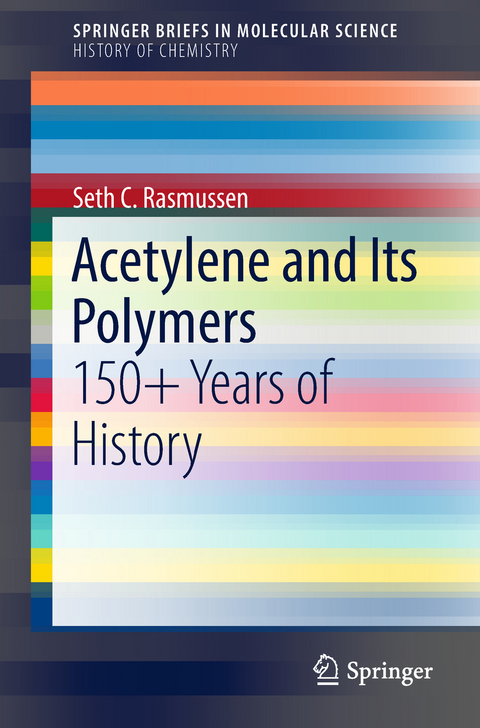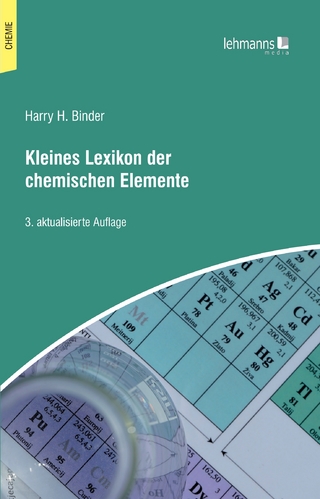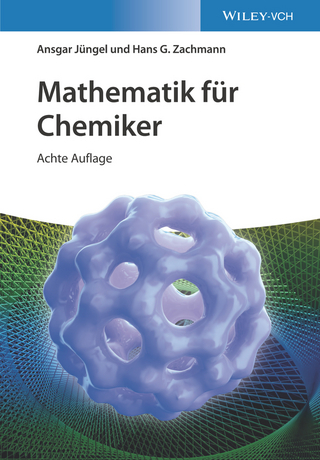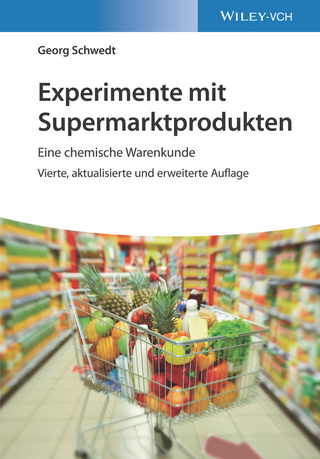
Acetylene and Its Polymers
Springer International Publishing (Verlag)
978-3-319-95488-2 (ISBN)
This Brief presents for the first time a detailed historical overview of the development of acetylene polymers, beginning with the initial discovery of acetylene in 1836 and continuing up through the 2000 Nobel Prize in Chemistry. The polymerization of acetylene is most commonly associated with polyacetylene, which was found to be conductive when treated with oxidizing agents such as Br2 or I2 in the mid-to-late 1970s. In fact, under the right conditions, oxidized polyacetylenes can exhibit conductivities into the metallic regime, thus providing the first example of an organic polymer exhibiting metallic conductivity. As a consequence, the 2000 Nobel Prize in Chemistry was awarded to Hideki Shirakawa, Alan MacDiarmid, and Alan Heeger for this pioneering research, the award citation reading "for the discovery and development of electrically conductive polymers." Because of this, most incorrectly view polyacetylene, as well as conducting polymers in general, to originate in the 1970s.
In this work, the author examines the polymerization of acetylene from early thermal polymerization studies to the ultimate production of the fully conjugated polyacetylene. Although true polyacetylene was not successfully produced until the 1950s by Giulio Natta, the polymerization of acetylene dates back to 1866 with the work of Marcellin Berthelot. These initial efforts were continued by a range of scientists to produce a polymeric material collectively given the name cuprene in 1900 by Paul Sabatier. Between the initial cuprene studies and the production of true polyacetylene, two related materials were also studied, usually referred to as polyenes and polyvinylenes. Although both of these materials could be thought of as forms of polyacetylene, neither was actually generated from the direct polymerization of acetylene. Readers will gain insight into the fact that polyacetylene and conducting organic polymers have a much longer history than commonly believed and involved the work of a significant number of Nobel Laureates.
Seth C. Rasmussen is a professor of chemistry at North Dakota State Universi-ty (NDSU) in Fargo (seth.rasmussen@ndsu.edu). A native of the Seattle area, he received his B.S in chemistry from Washington State University in 1990, before continuing his graduate studies at Clemson University under the guidance of Prof. John D. Petersen. After completing his Ph.D. in inorganic chemistry in 1994, he moved to the University of Oregon to study conjugated organic polymers as a postdoctoral associate under Prof. James E. Hutchison., He then accepted a teaching position at the University of Oregon in 1997, before moving to join the faculty at NDSU in 1999. Attaining the rank of full professor in 2012, Prof. Rasmussen also spent the spring of 2018 as a Fulbright Senior Scholar and visiting professor at the Centre for Organic Electronics of the University of Newcastle, Australia. Active in the fields of both materials chemistry and the history of chemistry, his research interests include the design and synthesis of conjugated materials, photovoltaics (solar cells), NIR photodectectors, organic light emitting diodes, the history of materials, chemical technology in antiquity, and the application of history to chemical education. As both author and editor, Prof. Rasmussen has contributed to books in both materials and history and has published more than 95 research papers and book chapters. He is a member of various international professional societies including the American Chemical Society, Materials Re-search Society, Alpha Chi Sigma, American Nano Society, Society for the History of Alchemy and Chemistry, History of Science Society, and the International His-tory, Philosophy & Science Teaching Group. Prof. Rasmussen served as the Program Chair for the History of Chemistry (HIST) division of the American Chemical Society from 2008 to 2017 and continues to serve the division as a member-at-large of its executive committee. In addition, he currently serves as the series editor for the Springer Briefs in Molecular Science: History of Chemistry book series, as an editor of the journal Cogent Chemistry, and on the advisory board for the journal Substantia: An International Journal of the History of Chemistry.
Introduction.- Acetylene.- Cuprene.- Polyenes and Polyvinylenes.- Polyacetylene.- Doped Polyacetylene.- 2000 Nobel Prize in Chemistry.
| Erscheinungsdatum | 05.08.2018 |
|---|---|
| Reihe/Serie | History of Chemistry | SpringerBriefs in Molecular Science |
| Zusatzinfo | XI, 136 p. 59 illus., 4 illus. in color. |
| Verlagsort | Cham |
| Sprache | englisch |
| Maße | 155 x 235 mm |
| Gewicht | 236 g |
| Themenwelt | Naturwissenschaften ► Chemie ► Allgemeines / Lexika |
| Schlagworte | 2000 Nobel Prize in Chemistry • Acetylene • conducting polymers • Cuprene • electrically conductive polymers • Marcellin Berthelot • Polyacetylene • Polyene • Polyvinylene • Saturated and Unsaturated Gaseous Hydrocarbons • UV Polymerization |
| ISBN-10 | 3-319-95488-1 / 3319954881 |
| ISBN-13 | 978-3-319-95488-2 / 9783319954882 |
| Zustand | Neuware |
| Haben Sie eine Frage zum Produkt? |
aus dem Bereich


